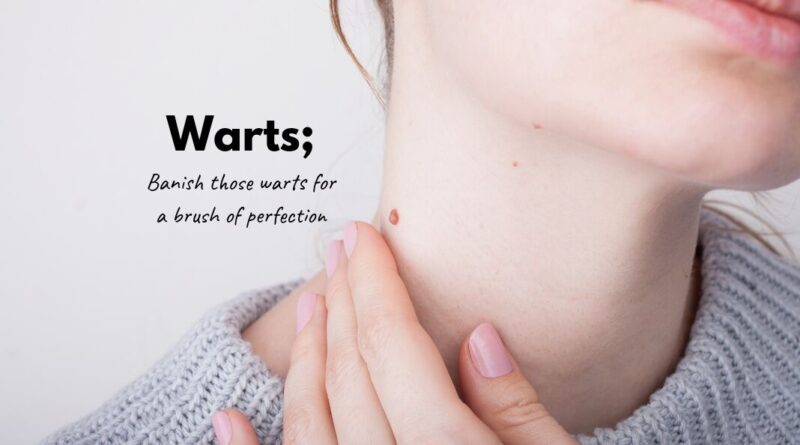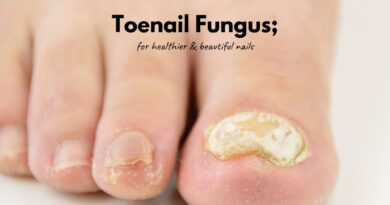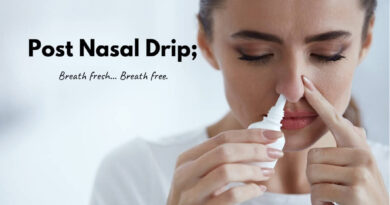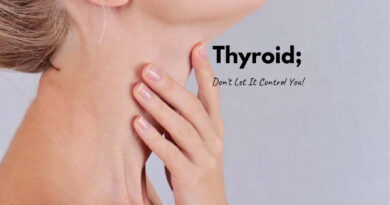4 Effective Remedies To Get Rid of Warts Naturally
Table of Contents
What Are Warts?
Warts are usually small growths on the skin that have a rough texture. There are several different types of warts, and they can appear on any part of the body, though they are often found on the hands, feet, neck areas.
Warts are caused by viruses of the human papillomavirus (HPV) family. Warts are usually not painful or concerning in any way other than from a cosmetic perspective. However, if you feel concerned about having a wart or if it’s painful, you should consider consulting a doctor at the earliest.
Warts are contagious and are contracted when the skin comes in contact with the wart-causing virus. They are more likely to develop in areas where the skin is broken or damaged because this allows the virus to infiltrate into the top layer of the skin.
There is uncertainty about why certain groups of people are more likely to get warts than others, but research is underway. While some things about these pesky growths on the skin are unknown.
Did You Know!
| Warts are contagious growths on the skin that spread by contact. Maintain good personal hygiene in order to prevent the spreading of the wart-causing human papillomavirus (HPV). |
Naturopathic Remedies for Warts
This article seeks to serve as a guide for those looking to get rid of warts naturally at home.
- Essential Oils
- Supplements
- Natural Remedies
- Alternative Treatments
Types of Warts
All warts look different; however, they can be classified into five types based on characteristics and the location where it appears.
1. Plantar Warts
Plantar warts are found on the soles of feet and are peculiar because they grow inward, rather than outward like other warts. This is because they are forced inside by the pressure that your feet bear. Plantar warts can make it painful and uncomfortable to walk or stand, and look like small holes surrounded by hardened skin or calluses.
2. Common Warts
Common warts have a rough texture and occur on the hands and fingers . They might also clot blood vessels that look like tiny black spots on the surface.
3. Flat Warts
Flat warts, or verruca plana, appear as slightly raised patches of skin that are round, smooth, and skin-colored. The most commonly occur on the face, thighs, and arms. These form when there is a cut on the skin through which the wart-causing virus (HPV) enters, which is why it often occurs around the beard area in men and on the legs in women. They usually form in clusters of 20 to 200. Flat warts are caused by HPV types 3, 10, 28, and 49.
4. Filiform Warts
Filiform warts have a distinct appearance from other types of warts, featuring one to two mm long cilia-like growths that are either brown, pink, or skin-colored. They are most commonly found on the face, neck, and around the mouth. These warts are shaped like tags and are caused by strains 1, 2, 4, 27, and 29 of the HPV.
5. Periungual Warts
Periungual warts form in, around, and under the fingernails and toenails. They initially appear tiny but grow to become a big, rough protrusion that is often painful. Then, it spreads to form clusters of warts in the area and could disfigure the nail. These are most commonly seen in children and young adults who tend to bite their nails. While these warts are rather difficult to treat, it helps to have it treated before they become bigger and more painful. They are caused by strains 1, 2, 4, 5, 7, 27, and 57 of the human papillomavirus (HPV).
6. Genital Warts
Genital warts are a sexually transmitted infection (STI) that are caused by the human papillomavirus (HPV). They occur in people who are sexually active. They can be itchy and painful, causing moderate to extreme levels of discomfort. The infection can be dangerous, especially for women, who are at risk of developing cancer of the cervix and vulva. It can also cause penile and anal cancer.
Genital warts appear on the penis, scrotum, groin, thighs, and anus in males. In females, they occur inside or outside the vagina or anus, and on the cervix. Symptoms include vaginal discharge, itching, bleeding, and burning. If you believe you are experiencing symptoms of the infection, you should consult a doctor immediately.
Do not attempt to treat the infection by yourself in any way before consulting your doctor first, as this could worsen the situation. The infection is contagious and can be transmitted through intercourse, oral sex, or other sexual activity performed with or without protection.
| Women who have genital warts are at high risk for cervical cancer. Talk to your doctor about immunization as there is a vaccine to help protect against the risk of cervical cancer. |
CURE 1: Essential Oils for Warts
Warts can be painful, embarrassing, and potentially dangerous. Treating your warts early on could mean curing them faster. However, it’s important to diagnose the lesions as warts before attempting to treat them. If you notice unfamiliar lesions on your body, you must consult a doctor before attempting to treat them in any way. Once you have diagnosed that you have warts, you can proceed to treat them using these essential oils for warts.
1. Neem Oil
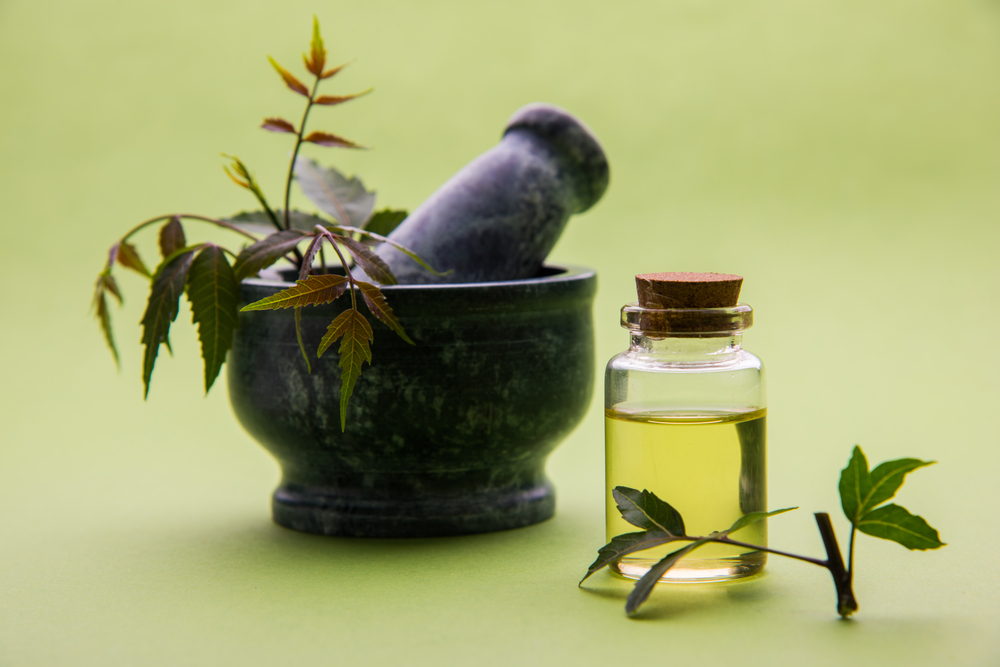
Why Does It Work?
Neem oil is extracted from the neem (Indian lilac) tree, which has been used as a medicinal plant since ancient times. It is often incorporated into ayurvedic treatments. It acts as a natural pesticide. Neem oil can be very effective in treating warts, as research(1) shows that the oil has antifungal and antiviral properties.
How to Use?
Make sure to dilute the oil in a carrier, like a jojoba oil or coconut oil as the oil can be potent and pungent.
2. Tea Tree Oil for Warts
Why Does It Work?
Melaleuca alternifolia is a bush from which tea tree oil is extracted. Historically, due to its antiviral properties(2), it has been used as a medicinal plant, which could help in the treatment of warts.
How to Use?
It is not advisable to apply concentrated tea tree oil for warts without diluting it in a carrier oil first. Jojoba and coconut oils are good carrier oils that you can use. It is an effective treatment that will yield results in a few months when applied twice daily. If you’re pregnant, breastfeeding, or using it on a child, exercise caution as the oil might cause hormonal activity.
3. Oregano Oil for Warts
Why Does It Work?
Oregano is often used as a spice or seasoning and is renowned for its delectable taste that adds flavor to any dish it’s added to. However, this oil is more than just its flavour. Using oregano oil for warts is a good idea because of its antifungal, antibacterial, antioxidant, and anti-inflammatory properties.
One of the compounds that it contains – carvacrol – is proven(3) to have antiviral properties that can be effective in treating warts.
How to Use?
Always dilute the oil before applying it to the skin. Avoid using it if you’re pregnant or breastfeeding.
4. Castor oil for warts
Why Does It Work?
Castor oil contains antimicrobial and antiviral properties that are helpful in treating warts. The oil is quite potent and must be used in dilution with a carrier oil like jojoba.
How to Use?
Applying castor oil for warts every day for a minimum of two weeks can cause the wart to fall off.
Also Read: Amazing Benefits of Castor Oil And it’s uses
5. Frankincense Oil
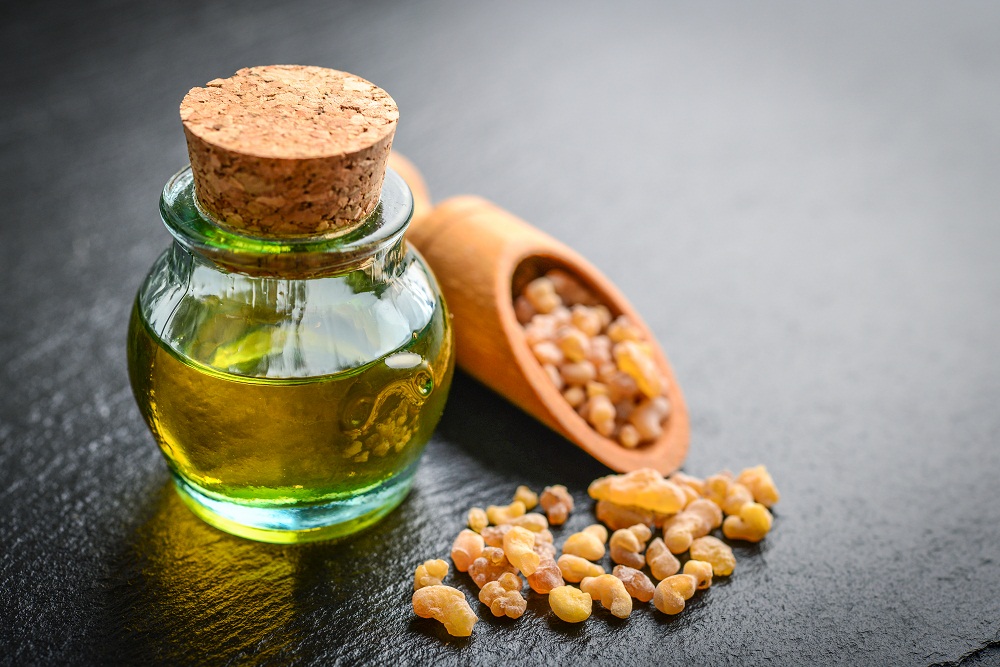
Why Does It Work?
Frankincense oil is commonly used in aromatherapy and alternative medicine. It has been used for its medicinal properties since ancient times. The oil has strong astringent and wound repairing properties.
How to Use?
Use the oil by diluting it in a carrier and applying it onto the site of infection using a cotton swab.
It might help to cover the swab with a bandage. Results are usually seen in a few weeks when applied twice weekly. It is not advisable to use this oil if you’re pregnant, breastfeeding, or using anticoagulative medicines like heparin and warfarin.
6. Clove Oil
Why Does It Work?
The dried flower bud of an evergreen called Syzygium aromaticum is commonly known as clove. The spice has been used in medicinal applications for centuries around the world. The extracted oil is rich in antiseptics that numb the skin. It is an excellent choice for warts that are sore or painful.
How to Use?
Dilute the oil in a carrier before applying it to the skin. Apply the mixture to the skin twice a day. Do not use this oil if you take anticoagulants or have a blood-related ailment, like hemophilia, as clove can cause abnormal bleeding.
Warts are usually benign (non-cancerous) growths that appear when the human papillomavirus (HPV) infects the upper layer of the skin. Not all strains of the virus cause warts.
CURE 2: Supplements
1. Vitamin A
Why Does It Work?
While warts are a viral infection caused by the human papillomavirus (HPV), studies have shown a strong correlation between vitamin A supplementation and the treatment of warts.
This study describes an experiment wherein the test subject, a thirty-year-old female who reported having common warts on her hand for the past nine years, used naturally derived vitamin A every day on her warts to get rid of them completely in about six months. Although the research is not conclusive, it points towards being able to get rid of warts that have lasted a long time with ease.
How to Use?
Take the dosage as advised by your doctor.
2. Zinc for warts
Why Does it Work?
Several studies have shown that the administration of oral zinc supplements to a test subject who has warts cleared their case of warts within a few weeks to a few months. In a certain placebo-controlled clinical trial, forty patients with different types of warts were treated with oral zinc supplementation at a dose of 10 mg/kg every day up to 600 mg/kg.
Another group of patients was administered a placebo oral treatment for the same period(4). The aim of the study was to examine the effects of oral zinc supplementation on warts and their recurrence in the following two to six months.
The results of the study showed that twenty-three patients belonging to the zinc-treated group and twenty of the control group were able to complete the study. Twenty of the twenty-three patients belonging to the first group saw complete clearance of their warts within two months of treatment.
Fourteen of those twenty patients observed a complete clearance of their warts within a month of treatment, and three patients did not respond to the treatment. Additionally, patients of the placebo group did not show signs of improvement.
How to Use?
Zinc is safe for oral consumption for this purpose, especially in those who do not respond to other methods of treatment. It is the consensus that the supplements be taken for a minimum of three months to see results.
3. Vitamin D

Why Does It Work?
A study published in the Journal of Cutaneous Medicine and Surgery(4) examined twenty patients with plantar warts. The researchers injected a volume of 0. 2 mL, 7. 5 mg/mL of vitamin D3 into the base of warts post the injection of prilocaine. The study concluded with sixteen of the twenty (80%) subjects showing complete clearance of their warts and one subject showing partial clearance of warts. Three patients failed to exhibit any signs of improvement.
This study seems to suggest that intralesional vitamin D3 supplementation might be an effective treatment. However, more research is required on the subject, and the results of this study are not conclusive to say that vitamin D3 is an effective treatment of warts.
How to Use?
Take the dosage as advised by your doctor.
4. Vitamin E for warts
Why Does It Work?
Vitamin E is another supplement that you can take to deal with warts. It works by strengthening your immune system and improving your body’s ability to fight pathogens like human papillomavirus (HPV). However, there have been no studies that suggest that this is a concrete fact.
How to Use?
You can take vitamin E supplements orally or open up a capsule and apply the powder directly to the wart and cover it with a bandage, leaving it overnight. Repeat this step every day for two weeks to see results.
Warts are typically harmless and will fall off by themselves, but it can take anywhere from a few weeks to a few years.
CURE 3: Natural Remedies
1. Apple Cider Vinegar for Warts
Why Does It Work?
Apple cider vinegar helps to treat pesky warts. It works like salicylic acid and peels off the skin. The vinegar is an antimicrobial that might help fight the strains of human papillomavirus that cause warts. This is not proven by studies, but certain studies seem to suggest that it might be an effective treatment for warts. This requires more research to arrive at a conclusion.
How to Use?
Dilute apple cider vinegar in water in a 2:1 ratio. Soak a cotton swab or ball in the solution. Put the swab on the wart and cover it with a bandage and leave it for four hours. Make sure always to dilute apple cider vinegar before application, as the acidity of the vinegar could cause your skin to burn. Do not apply the solution to your wart if it is cut or bleeding.
2. Dandelions
Why Does It Work?
Dandelions are more than just weeds that are hard to get rid of from your backyard. The weed has been used as a medicinally-important plant for centuries since the ancient Chinese discovered its medicinal properties. The sap derived from the weed is commonly used as a traditional medicine to treat skin ailments, like warts.
A study(5) found that dandelion increases collagen production and has anti-inflammatory properties on animals. These properties can help treat warts; however, it must be noted that there hasn’t been enough research on the subject to suggest that this is concrete or conclusive.
How to Use?
You can use extract the white sap from dandelions by breaking them apart and then applying the resulting sap onto your wart every day for two to three weeks. Ensure that the dandelions you pick have not been sprayed with any chemicals, such as anti-weeds as this can have serious reactions with the skin.
3. Aloe vera for warts

Why Does It Work?
Aloe vera is widely known for the skin benefits it offers. When it comes to dealing with warts, aloe vera does a good job of getting rid of them. It is especially useful if your wart is itchy or painful. It has several anti-inflammatory and antioxidant properties that can fight pathogens, like human papillomavirus (HPV).
How to Use?
There are no concrete scientific studies to suggest that aloe vera or its gel can deal with human papillomavirus, but many people claim to have gotten relief from simply applying the gel from the shrub onto their warts. Do this once a day to notice results in a matter of months.
4. Duct Tape
Why Does It Work?
Duct tape might look like an oddball on this list, but surprisingly, it happens to be one of the most common home remedies for warts. It’s a common household item that you can use to get rid of your warts inexpensively There have been studies on the subject, but results are mixed.
One study, conducted in 2002, suggested that duct tape is comparatively more effective than freezing, but another study conducted in 2007 suggests that duct tape didn’t fare any better than freezing when it came to completely removing warts.
How to Use?
You can use duct tape to get rid of your warts by simply sticking a small piece of it directly onto your wart for a period of three to six days, after which you can remove it and soak the wart in hot water and scrub it with a pumice stone. Leave the wart exposed to the air for twelve hours. Repeat the process multiple times for effective treatment of the wart.
Exercise caution when using this method as some people’s skin can be sensitive to duct tape. It can cause irritation and inflammation.
5. Pineapple
Why Does It Work?
Pineapples contain bromelain, which is a group of enzymes that break down proteins. Attempts to cure warts with pineapples rely on bromelain to break the proteins in human papillomavirus, the virus that causes warts. There is some medical evidence to suggest that this is effective in treating warts; however, the evidence is not concrete.
How to Use?
One of the most common methods to use pineapples to treat warts is to soak the wart in pineapple juice once daily until it disappears.
| It is estimated that nearly 50% of sexually active people are infected by HPV, with women being at greater risk. |
CURE 4: Alternative Treatments
There is no specific cure for the human papillomavirus in general; however, there are a few ways by which warts can be treated using conventional medicine. These treatments can be expensive and time-consuming because of which many people turn to home remedies and other forms of alternative medicine. Here are a few conventional methods of treating warts.
1. Salicylic Acid
Salicylic acid is used to peel away the skin over the course of several applications, causing the wart to disappear. It is a powerful exfoliant that can peel the skin away easily. Application of salicylic acid to the skin causes an immune system response that will speed up the production of new healthy skin cells in place of the peeled away skin.
Do not attempt to apply salicylic acid by yourself if you have a health condition that affects your blood flow, such as diabetes.
2. Cryotherapy
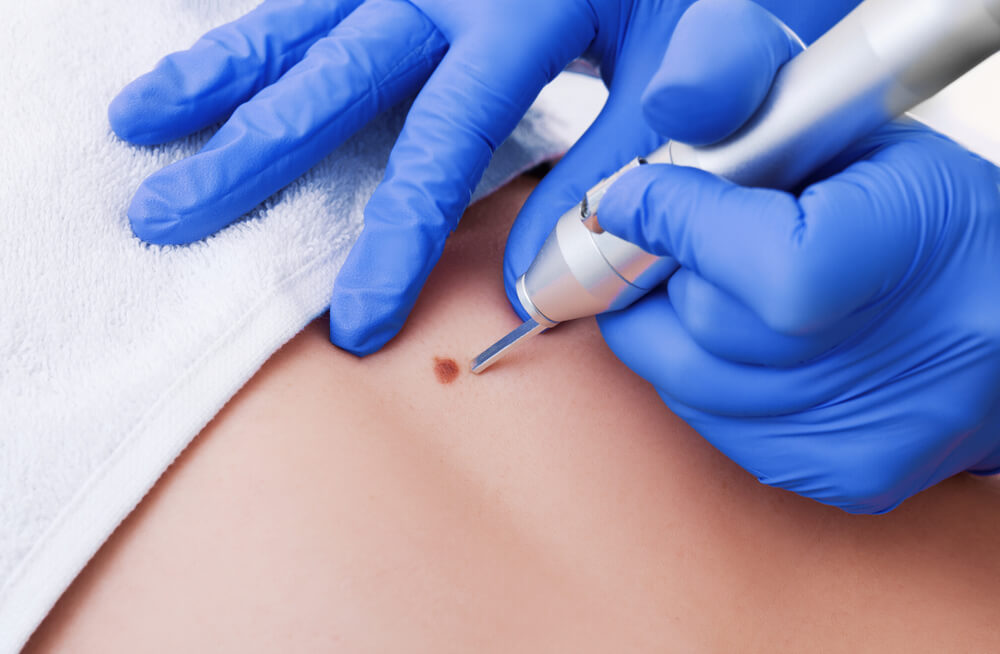
This method of treating warts involves freezing it using a very cold substance like liquid nitrogen. The process causes the cells of the wart to succumb to the extremely low temperatures of liquid nitrogen and fall off. Cryotherapy is a painful process and might require the use of a local anesthetic to numb the skin. The liquid nitrogen is applied to the wart using a probe, swab, or spray. Usually, one to three cycles of treatment is required to get rid of the wart completely.
Cryotherapy can be administered at home using over-the-counter products that contain dimethyl ether and propane instead of liquid nitrogen. It is not safe to use this method on genital warts. We would advise against attempting to this yourself and would suggest consulting a professional for the same.
3. Laser Surgery
This method is usually the last recourse when it comes to treating warts. A precise beam of powerful laser called a pulsed-dye laser is used to treat warts. It works by heating the bond in the blood vessels inside the wart, causing it to fall off due to the lack of blood supply.
The process is not painful, and one can recover completely from the procedure within two to four weeks. This procedure is used for warts in sensitive areas, especially for genital warts. The use of local anesthesia might be required.
There are over a hundred strains of the human papillomavirus!
How to Prevent Warts
Warts are a viral infection that is contagious and spreads by contact. You can avoid or prevent the virus from causing warts by taking the following measures:
1. Avoid Contact
You can avoid contracting human papillomavirus (HPV) and the formation of warts by avoiding physical contact with anyone who has warts. The virus can enter your body through the tiniest cut or scratch, causing warts.
2. Sharing of Personal Items
Sharing personal items like towels, razors, socks, underwear, and other personal items can allow the virus to spread, causing warts. You can avoid this by ensuring that you don’t share personal items with anyone around you.
3. Cuts and Wounds
Cuts and wounds provide the virus with an easy inlet into your body. It’s a risk to have exposed cuts and wounds even if you’re not around anybody with warts since human papillomavirus (HPV) is found everywhere. Clean and dress any cuts or wounds that you might have to prevent the spreading of the infection.
4. Walking Barefoot
Walking barefoot in wet and moist areas could allow the virus to affect your feet easily. Wet and moist environments allow the virus to thrive. This makes wearing footwear in such areas essential to prevent warts and other complications that come with it.
There are many steps you can take to prevent yourself from being exposed to the wart-causing HPV. Protect yourself by making sure you follow the preventive measures listed in this article.
While most warts are harmless and go away on their own, using home remedies, like those mentioned in these guides could help alleviate the situation. This guide caters to a general audience, but every medical case is unique. This makes it important to exercise caution when treating yourself in any way. It is crucial to consult your doctor before attempting any of the remedies listed in this guide. This is especially important if you’re pregnant, breastfeeding, taking any medicines, or have any existing conditions that the home remedies listed above could interfere with. Therefore, we strongly advise that you consult a doctor before attempting any of the aforementioned remedies.
Warts can be annoying, itchy, painful, and embarrassing. However, there are a few ways that you can get rid of them. Using the home remedies and other methods mentioned in this article, you can effectively get rid of your warts. To recap, some of the most effective ways to deal with warts include;
- Essential oils, like neem, tea tree, castor, oregano, and frankincense.
- Home remedies, including duct tape, aloe vera, pineapples, aspirin, and others.
- Medical treatments, like cryotherapy, laser surgery, and salicylic acid.
- Supplementation with vitamins A, D, E, and Zinc.
You can avoid your warts from spreading to other people by ensuring that you do not share personal items, like towels and underwear, avoiding physical contact, and maintaining good hygiene. Make sure to stay dry, as wet environments are the perfect environment for warts to thrive. Always dress any cuts or wounds to protect yourself from viruses, like human papillomavirus (HPV).
The virus can be found everywhere, and it’s important to take precautions to protect yourself from it. If you have genital warts, it’s important to talk to your sexual partner about the condition, even though it can be uncomfortable to do so. This will prevent it from spreading to your partner.
Please refer to the cautionary statement above before attempting to treat your warts using any of the methods mentioned herein. We strongly discourage attempting to try these methods without consulting a doctor first, especially if you have pre-existing medical conditions.
FAQs
1. Do warts itch?
Yes, warts can be itchy in some cases, depending on the kind of wart and the strain of HPV that might have caused it. Warts can also be painful and cause discomfort. You can use the home remedies and treatments listed above to treat warts. However, it is important to consult your doctor before you use any remedy to treat warts.
2. Why do warts form?
Warts are caused by various strains of the human papillomavirus (HPV) and are contracted by contact with someone who has the infection or using personal items like towels. Avoid contact and sharing items with people if you have warts, as they are contagious and can spread by making contact. It might take several weeks to months for the virus to start showing symptoms of infection.
3. What vitamin deficiency causes warts?
Warts are caused by various strains of the human papillomavirus (HPV) and not by the deficiency of vitamins. However, it will help if you take vitamin A, D, and E supplements to treat warts.
4. How contagious are genital warts?
Genital warts, like all warts, are very contagious and spread as a sexually transmitted infection (STI). Specific strains of HPV cause genital warts, which could develop into cancer. It is of utmost importance to consult a doctor if you suspect having genital warts. You must talk to your sexual partner about the issue as it concerns them as well. Doing this could protect your partner from contracting the infection.

